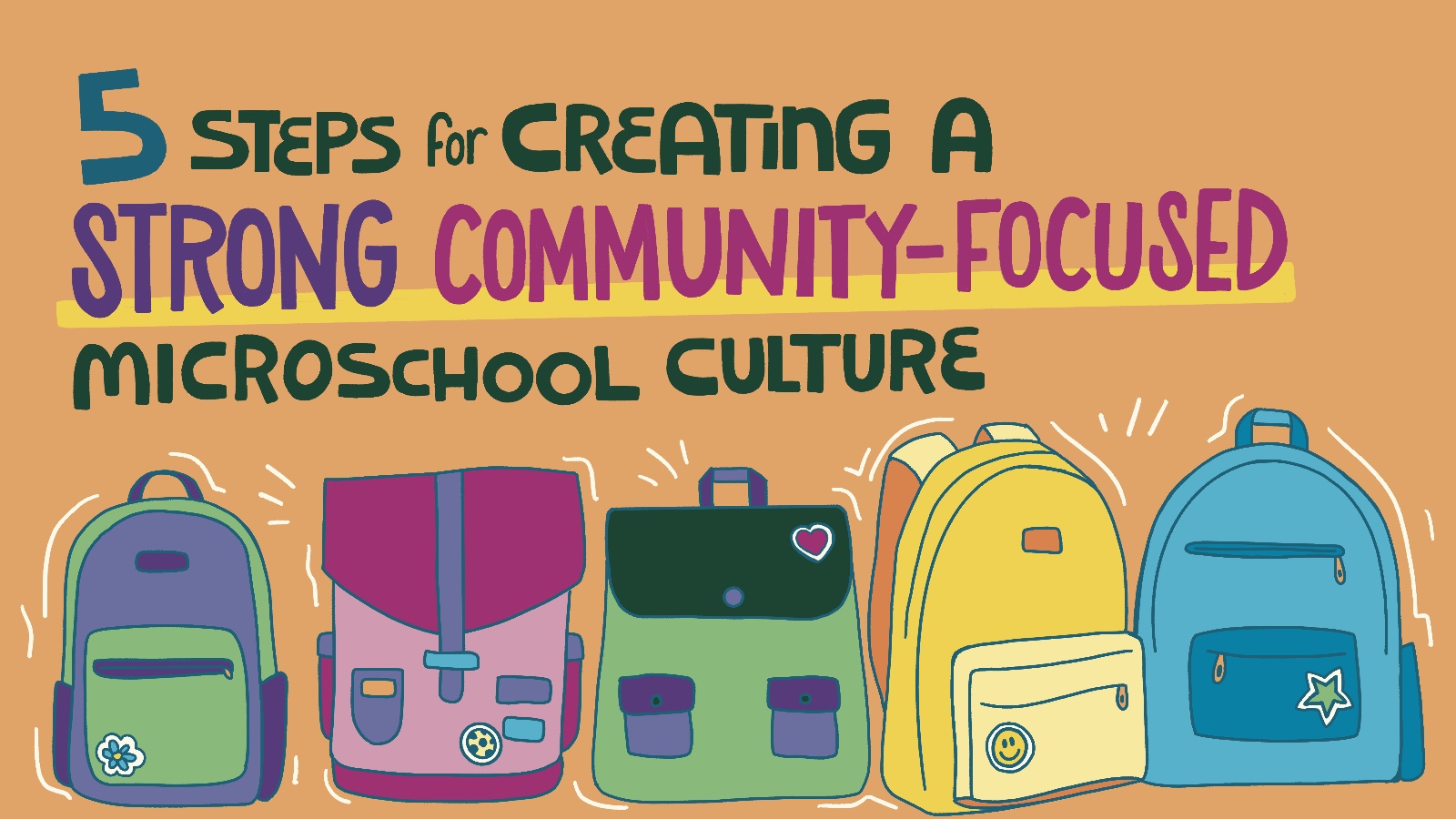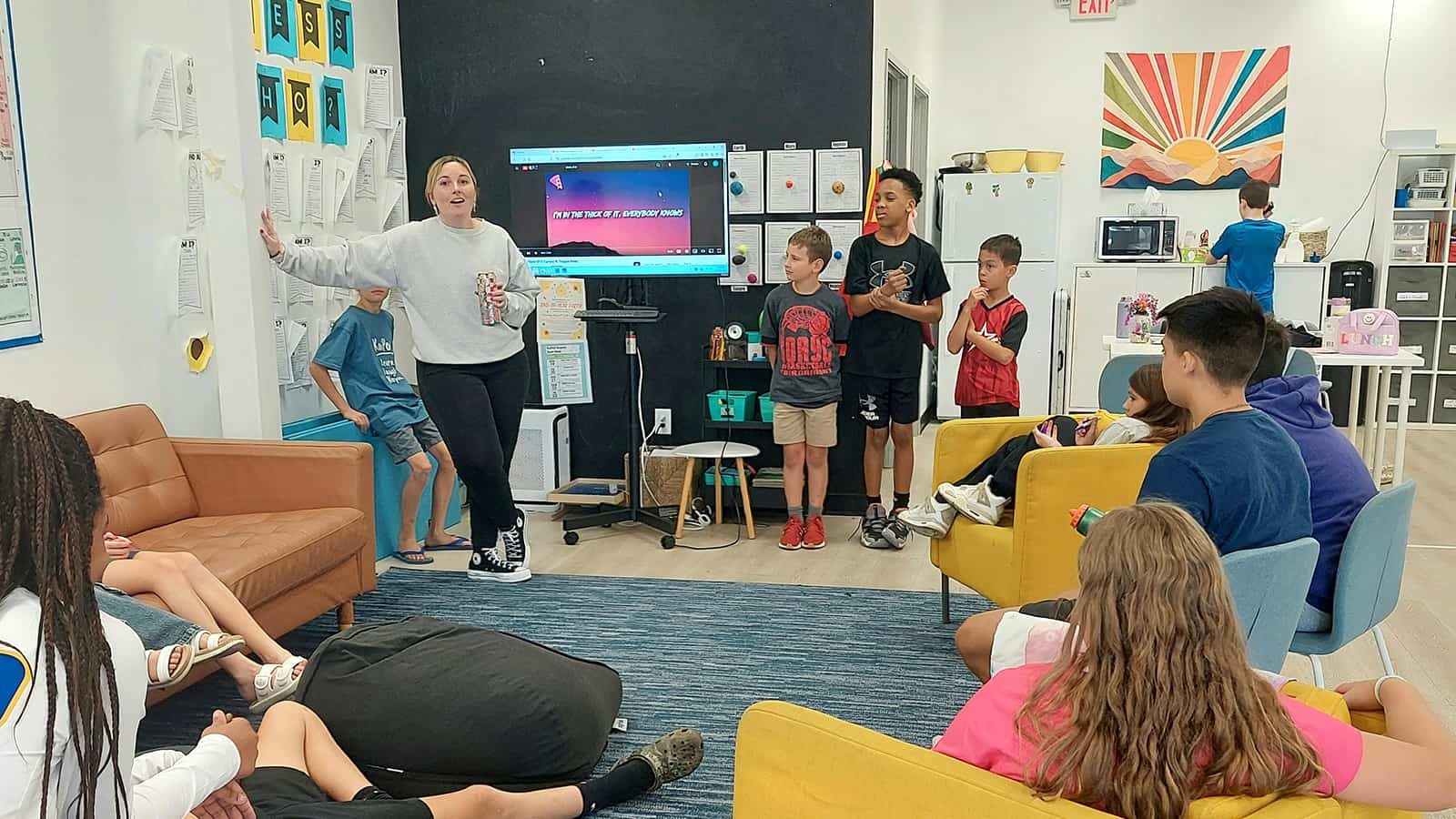From the earliest stages of conceptualizing your Microschool, you will need to seek community feedback. You may talk to friends about your vision for what the school will be, and you may tap into local organizations that share your school’s values and vision to collect feedback. These connections will support your school throughout its operation, but so will your new community, built within your school. That community will become the heart of everything your school represents.
Here are five crucial steps for building the community-focused culture at your Microschool.
1. Ensure Every Student Has a Place
All students have their own reasons for enrolling at a Microschool, but most of them are looking to fill a gap that their prior school environment left behind. Maybe their last school didn’t fully meet their academic needs or engage with their interests. Figuring out what motivates each student is paramount.
Inclusion will look different for every student, but it begins with educators and staff. Teachers need to make sure that they are interacting with every student, meeting learners where they are, and ensuring nobody falls between the cracks. Teachers should spend the beginning of the school year learning what motivates each student, what their strengths and challenges are, and how to support, include, and celebrate them. At a Microschool, every student should feel a deep sense of belonging and know that they hold a unique place in the school’s community that could not be filled by anyone else.
With their small class sizes, personalized learning models, and focused missions, Microschools are ideal environments for inclusion. And without needing to navigate bureaucracy or district standards, educators have more time to truly focus on making each student feel heard and welcome. This can look like allowing students to express themselves in the way they’re most comfortable, whether that’s through writing, speaking, or art. It can look like assigning classroom tasks based on students’ interests and strengths. Or it can look like choosing course materials that reflect the backgrounds of the student population.
2. Embrace Families
Microschools and their founders are uniquely positioned to build personal relationships with every family enrolled. Families should be warmly welcomed into the school spaces, closely involved with learning opportunities as much as is practical, and always well informed of their children’s progress and challenges.
Compared to larger schools, Microschools can offer so much more, starting with more frequent and more meaningful communication. Families have made a mindful choice to join you; you can support their choice by keeping them in the loop about curriculum, student progress, and school events. Some Microschools even offer direct messaging between staff and families on a daily basis.
By including families in their children’s educational journeys, you can foster important relationships and ensure that learning and conversations about school don’t stop at the end of the school day. Not to mention, families who feel invested and involved in the school’s mission, values, and operations will be more likely to contribute their time, money, or other resources to support it.
3. Be a Curious, Adaptable Leader
At first, your Microschool exists only in your mind. Bringing it to life is a long process that consists of fine-tuning your vision, securing funding, and eventually opening the Microschool that you used to just dream about. It is natural to feel protective of your vision once it’s realized.
At the same time, to build a true community within your Microschool, you will need to amplify the voices of students, educators, and families too. You will need to seek out and value their input not just in conversation, but in action as well. When you ask for your community’s input and then enact changes in response to it, you show your Microschool community that they can trust you and that your school is a place where their feedback is valued. Families may be coming from larger, less personalized learning environments where they didn’t feel as heard. Now, they can have a stronger voice. When you recognize and respect their feedback, families will be more likely to stay in your Microschool community – and bring others in as well.
4. Partner with Community Organizations
Community doesn’t just mean the partnerships built within the Microschool. It also means connecting with local organizations. Consider making regular trips to the library, local businesses, nature center, or somewhere else that aligns with your school’s values. It’s important for students to know that the Microschool community extends beyond the school itself. By doing so, students can begin to see that their school is part of a larger collective, has a positive impact on others, or spreads awareness about important issues.
Partnering with community organizations is also a smart way to make your school more visible. When the public sees students engaged in projects outside of the classroom, they will naturally want to learn more about the school and what it offers. Consider every interaction with a community member an opportunity to gain a supporter for the work you’re doing.
5. Build Traditions
At first, your Microschool will be completely new, and that blank slate can seem both daunting and exciting. As you near an opening date, it will be important to engage teachers in conversations about how to recognize milestones. These conversations will be heavily centered on your school’s vision and mission. Microschools can recognize some milestones one on one with specific students, or engage the entire school in a celebration, ceremony, or other gathering. Start by identifying a few milestones that align with your school vision. Then, brainstorm appropriate ways to recognize them. For example, in a nature school, the school community might recognize the winter solstice at the end of the fall term and display examples of student work along a lantern-lit walk to celebrate their learning and the return of light.
Traditions may need to be somewhat flexible at first. Reflect on what works and what doesn’t, and solicit feedback from educators and students alike. Some traditions might adapt as students become more familiar with the Microschool environment, and others might change completely. This is fine. The important thing about traditions is that they contribute to a sense of belonging.
Community Culture in the Microschool Setting
Each Microschool will have its own culture, bred and nurtured by its school population. One feature, though, will be common to every Microschool: the value of community. In a small school setting, everyone has a place. Initially, as the school opens its doors and builds enrollment, the community will be what sustains the school. But over time, as the Microschool nurtures the families invested in it and provides opportunities for their involvement, the school will sustain the community.


